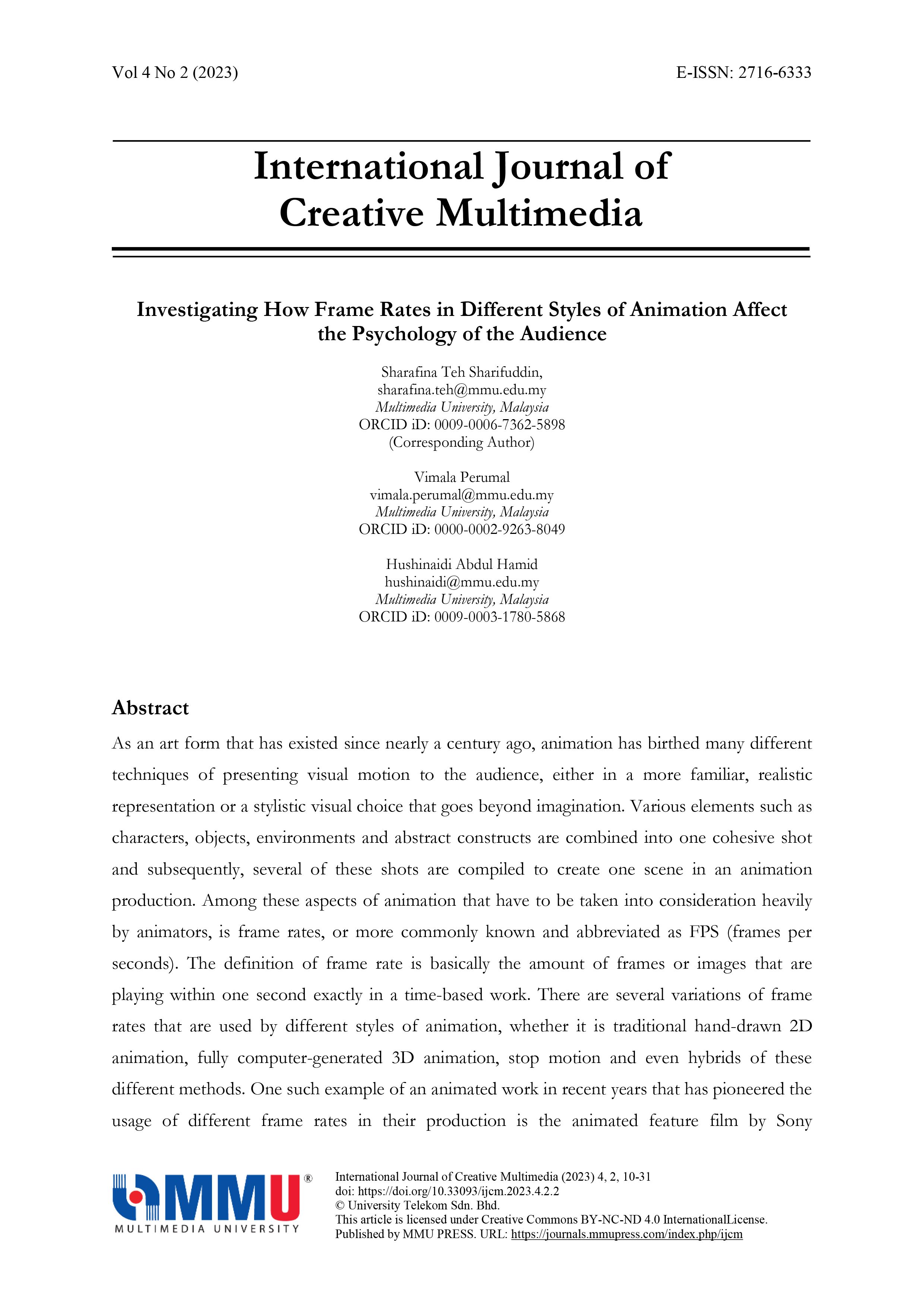Investigating How Frame Rates in Different Styles of Animation Affect the Psychology of the Audience
Main Article Content
Abstract
As an art form that has existed since nearly a century ago, animation has birthed many different techniques of presenting visual motion to the audience, either in a more familiar, realistic representation or a stylistic visual choice that goes beyond imagination. Various elements such as characters, objects, environments and abstract constructs are combined into one cohesive shot and subsequently, several of these shots are compiled to create one scene in an animation production. Among these aspects of animation that have to be taken into consideration heavily by animators, is frame rates, or more commonly known and abbreviated as FPS (frames per seconds). The definition of frame rate is basically the amount of frames or images that are playing within one second exactly in a time-based work. There are several variations of frame rates that are used by different styles of animation, whether it is traditional hand-drawn 2D animation, fully computer-generated 3D animation, stop motion and even hybrids of these different methods. One such example of an animated work in recent years that has pioneered the usage of different frame rates in their production is the animated feature film by Sony Animation, Spiderman: Into the Spider-Verse, and its sequel which was newly released in theatres, Across the Spider-Verse, among other examples as well, but for this film in particular, the usage of different frame rates was intentional. In this article, how different frame rates are utilized in different forms of animation are studied by analyzing different existing examples that have been published for the general audience in movie theatres, online streaming and television, as well as exploring the function of different frame rates and the effect that they have towards the audience’s psychology as well as in the context of storytelling when it comes to presenting their characters’ personality and background.
Article Details

This work is licensed under a Creative Commons Attribution-NonCommercial-NoDerivatives 4.0 International License.

